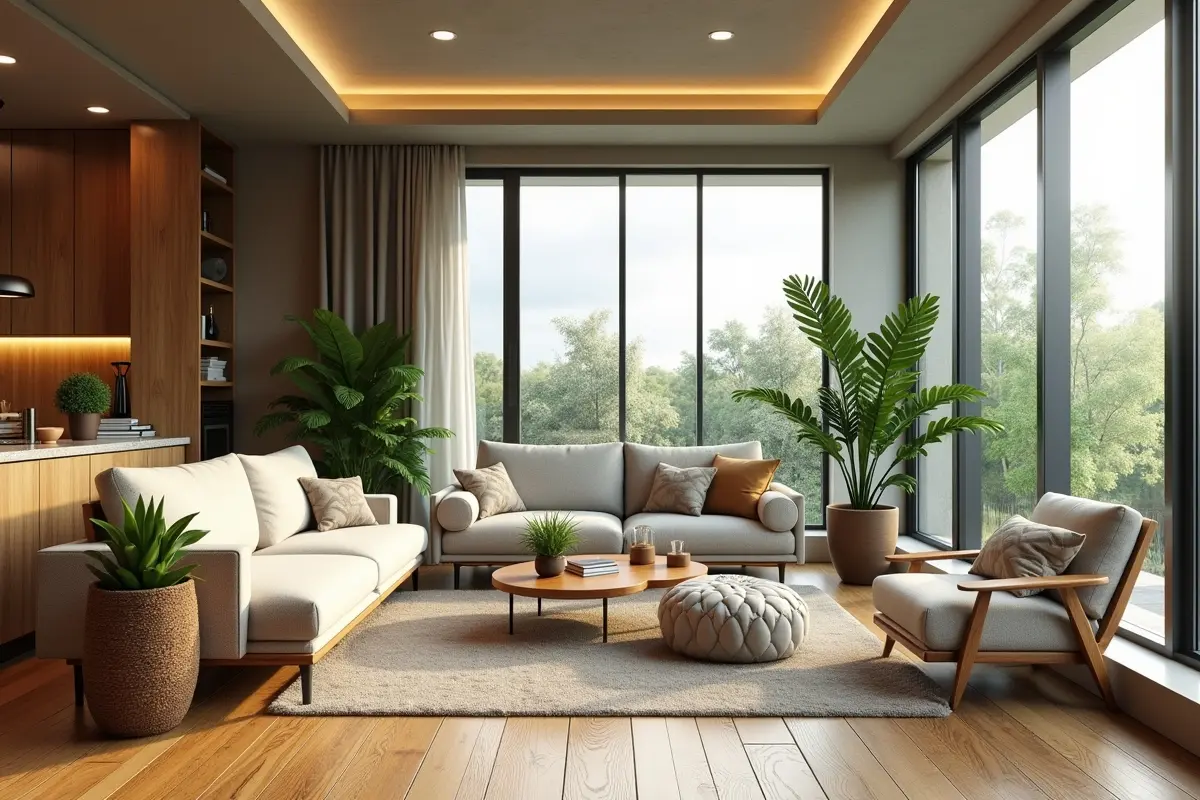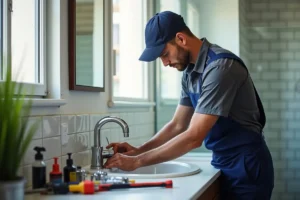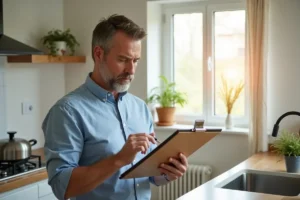Sustainable Living: Practical Steps for a Greener Home
Sustainable living is more than a trend—it’s an essential lifestyle shift that boosts well-being, cuts costs, and safeguards our planet. Whether you’re a homeowner or looking to make an eco-friendly shift in your rental space, like Griffis Residential Apartments, practical green choices are available for every situation. These straightforward steps help you transform your household into a hub of sustainability, ensuring healthier indoor environments and a reduced ecological footprint for future generations.
More people are realizing that sustainability need not be overwhelming or expensive. Starting small—switching a few appliances, reducing waste, or choosing eco-friendly decor—can add up to a significant, positive impact. Even in urban or rental settings, there’s plenty of room for proactive change. This guide provides actionable ways to revamp your home, conserve resources, and inspire others to live more sustainably.
Homes are increasingly designed for efficiency, and today’s renters or owners can easily access new tools and materials. Initiatives such as LED lighting, smart thermostats, and mindful landscaping not only improve environmental outcomes but often lead to noticeable savings on monthly bills. Learning about new sustainable solutions can empower everyone to make informed decisions that benefit the planet and their wallets.
Implementing sustainable home practices isn’t just about environmentalism—it’s also about comfort and community. Gathering knowledge, choosing carefully sourced materials, and redesigning spaces for low-waste living can foster a positive ripple effect. As you embark on this journey, each choice—however small—moves your living space closer to true harmony with nature.
Energy Efficiency Upgrades
Reducing your household’s energy demand is one of the most direct ways to support sustainability. By transitioning to LED bulbs, homeowners and renters alike can slash electricity use, as LEDs last longer and consume up to 90% less energy than old incandescent bulbs.
According to the U.S. Department of Energy, swapping just five of your most-used lights can save about $75 each year. Smart thermostats offer another valuable upgrade. These intuitive devices learn your daily patterns and optimize heating and cooling schedules accordingly, preventing energy waste when you’re away or asleep.
Water Conservation Strategies
Water is a finite resource, and residential water use makes up a significant portion of municipal demand. Start with the basics: repairing leaks as soon as they appear can prevent thousands of gallons of water from being wasted each year. Installing low-flow showerheads and faucets is another simple but effective step—these fixtures cut water use without sacrificing comfort, preserving both resource and utility budgets.
Consider collecting rainwater for garden irrigation or cleaning tasks. This not only eases strain on city water supplies but also nourishes plants with untreated water, reducing chemical run-off. Additionally, being mindful about watering schedules and choosing water-efficient appliances helps curb overuse while maintaining green spaces and healthy homes.
Sustainable Materials in Home Décor
The materials we choose for furniture and décor play a pivotal role in creating sustainable living environments. Reclaimed wood is an excellent example—each piece offers uniqueness and reduces demand for newly harvested timber, lessening the environmental toll of deforestation. For textiles and accents, bamboo stands out for its rapid growth and resource efficiency compared to traditional woods and cottons.
When painting or refurbishing, opt for paints low in volatile organic compounds (VOCs). These eco-friendly paints improve indoor air quality and produce far fewer harmful emissions.
Waste Reduction and Composting
One of the hallmarks of a green home is minimal waste output. Composting organic scraps at home diverts refuse from landfills, creating a nutrient-rich amendment for gardens and landscaping. Reducing single-use plastics—replacing them with durable containers, cloth bags, and refillable bottles—further lessens daily waste. Finally, committing to proper recycling and understanding your area’s sorting requirements ensures recyclable materials are processed correctly, maximizing their possible reuse and impact.
Indoor Air Quality Improvements
Many homes harbor unseen air pollutants stemming from cleaning products, cooking, and building materials. Swapping conventional chemical cleaners for natural alternatives helps reduce irritants and toxins in your indoor air.
Encouraging regular ventilation by opening windows allows fresh air to circulate throughout living spaces, which is an important step in maintaining a healthy indoor environment. For more detailed guidance on improving air quality in your home, the EPA provides practical tips and recommendations at its indoor air quality resource.
Introducing easy-care houseplants, such as snake plants or peace lilies, offers a dual benefit: these species filter airborne toxins while adding decorative appeal. Periodically checking HVAC filters and avoiding artificially scented products further enhances indoor air quality and supports respiratory health.
Sustainable Landscaping Practices
Sustainable landscaping can conserve water, minimize emissions, and foster local wildlife habitats. Choosing native plant species means less maintenance, as they are naturally adapted to your local climate and soil. Mulching your beds reduces evaporation and suppresses weeds, while drip irrigation delivers moisture precisely where needed.
Opting for organic pest control rather than chemical pesticides maintains ecological balance and protects pollinators like bees and butterflies, which are vital to our food systems and local biodiversity.
Smart Home Technologies
Modern smart home solutions streamline resource management and increase household comfort. Automated lighting systems can sense occupancy and daylight, dimming or turning off when not required, further reducing electricity use.
Home energy monitors track real-time power use and provide valuable insight into habits and opportunities for improvement. Smart irrigation systems automate lawn and garden watering, responding to soil moisture and weather forecasts to prevent wasteful overwatering. Upgrading to these technologies can seem daunting, but their ease of use and demonstrable savings underscore their value for sustainable homes.
Conclusion
Sustainable living is an evolving journey, built on mindful choices and a desire to harmonize comfort with conservation. Whether you’re taking first steps or refining an already green household, each action—no matter how small—strengthens the bond between your home and the natural world. By adopting some or all of these practical strategies, you can create an environment that benefits your health, your budget, and the planet.







0